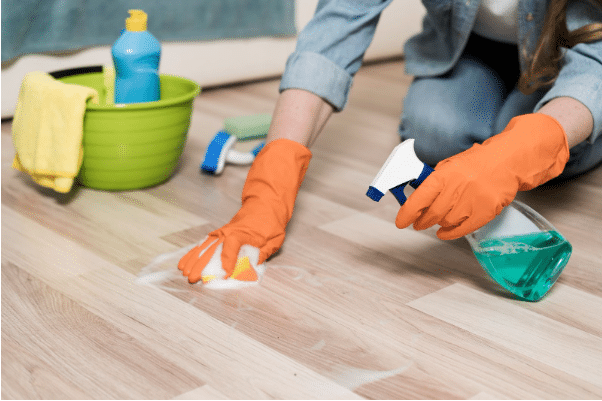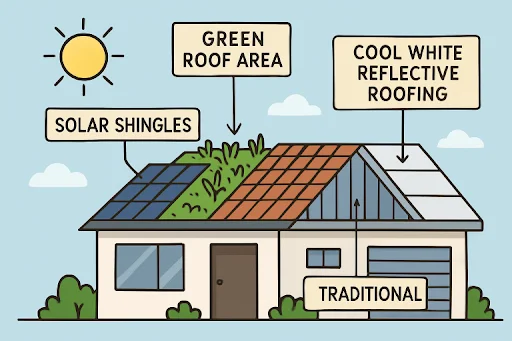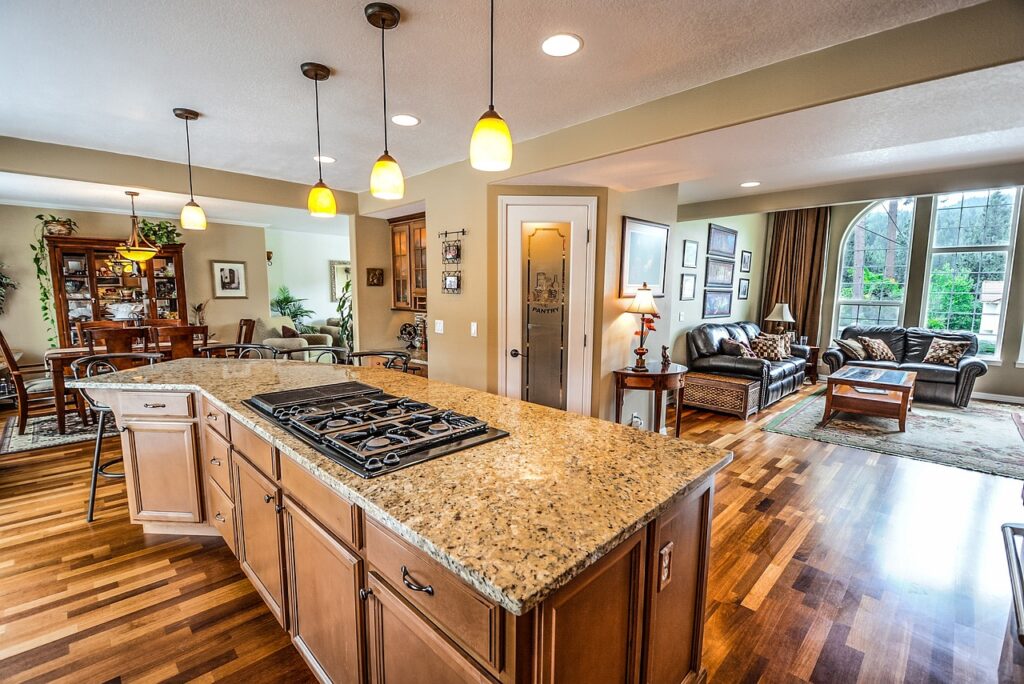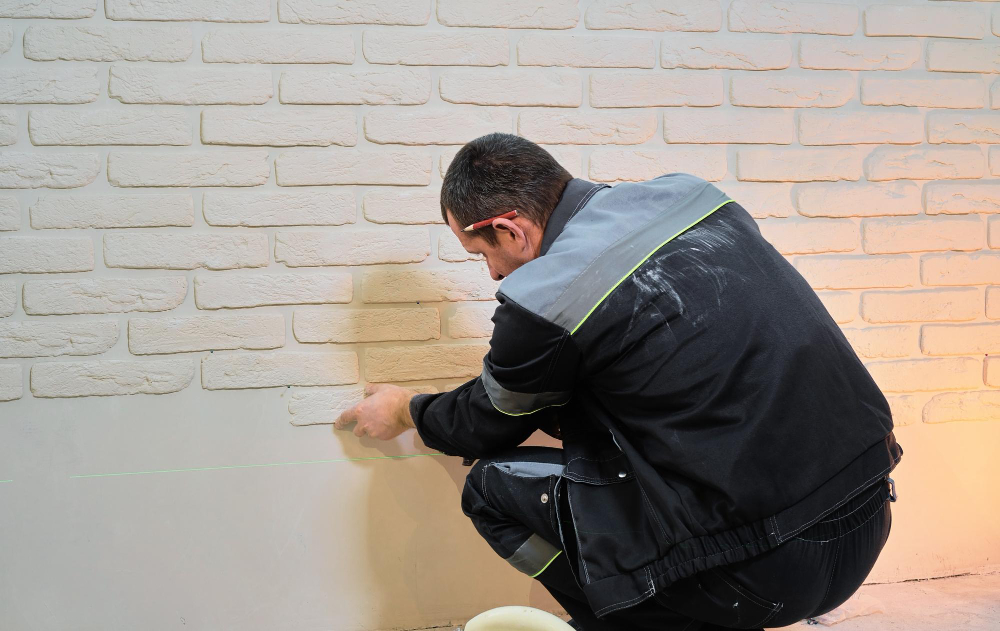How Poor Roofing Installation Can Lead to Costly Home Repairs

A home’s roof is one of its most important structural components, protecting the interior from the elements while contributing to energy efficiency and curb appeal. However, improper installation can quickly turn a roof into a homeowner’s biggest liability. Poorly installed roofs are more vulnerable to leaks, energy loss, and premature deterioration, often resulting in costly repairs. Understanding the risks associated with poor roofing installation and recognizing warning signs early can save homeowners thousands of dollars in future expenses.
The Consequences of Poor Roof Installation
Improper roofing installation can lead to a variety of structural and functional issues. While some problems may not appear immediately, they often develop within a few years, requiring significant repairs. Here are the most common consequences of a poorly installed roof:
1. Increased Likelihood of Leaks
One of the first issues homeowners notice with an improperly installed roof is water infiltration. A roof that isn’t properly sealed or aligned allows moisture to penetrate, leading to interior water damage.
How it Happens:
- Gaps in shingles or improper overlapping leave openings for water to seep in.
- Poorly installed flashing around chimneys and vents allows leaks in vulnerable areas.
- Inadequate sealing around fasteners creates small entry points for moisture.
Long-Term Impact:
- Water-stained ceilings and walls
- Mold growth in the attic and insulation
- Structural weakening of wooden supports
2. Higher Energy Bills Due to Poor Insulation
A properly installed roof acts as an additional layer of insulation for a home, keeping heat in during winter and out during summer. When a roof isn’t installed correctly, it creates air leaks, making HVAC systems work harder.
Signs of Poor Roof Insulation:
- Uneven heating and cooling throughout the home
- Higher than usual energy bills
- Ice dams forming along the roof’s edge in winter due to heat escaping
How to Prevent This:
- Ensure the roof has adequate underlayment and insulation.
- Use energy-efficient roofing materials suited for the climate.
- Install proper attic ventilation to maintain consistent temperatures.
3. Premature Roof Aging and Deterioration
Roofs are designed to last anywhere from 20 to 50 years depending on the material. However, improper installation can significantly shorten that lifespan, leading to costly replacements sooner than expected.
Causes of Early Roof Aging:
- Incorrect shingle alignment, which weakens the roof’s structural integrity
- Using low-quality or mismatched materials that degrade faster
- Poor attic ventilation, causing shingles to overheat and deteriorate
How to Extend Roof Lifespan:
- Choose high-quality, climate-appropriate roofing materials.
- Hire experienced professionals for roof installation.
- Schedule regular maintenance to identify and address early signs of wear.
4. Structural Damage to the Home
A poorly installed roof doesn’t just affect the roof itself—it can impact the entire home. Water infiltration and excess weight from improperly placed materials can weaken the home’s foundation and walls.
Potential Structural Issues:
- Rotted wood in the attic or roof decking
- Foundation cracks from water runoff mismanagement
- Sagging rooflines due to uneven load distribution
How to Avoid Structural Issues:
- Ensure proper weight distribution by selecting appropriate roofing materials.
- Install an effective gutter system to direct water away from the foundation.
- Reinforce the roof’s framework if necessary.
5. Voided Warranties and Insurance Issues
Many roofing manufacturers offer warranties, but they are often voided if the roof is not installed according to guidelines. Additionally, homeowner’s insurance may not cover damages resulting from improper installation.
Ways to Protect Your Investment:
- Work with licensed and certified roofing professionals.
- Request proof of compliance with manufacturer installation guidelines.
- Keep documentation of the installation process for warranty claims.
Warning Signs of a Poorly Installed Roof
While some roofing problems take time to surface, there are early warning signs that indicate poor installation:
- Misaligned or uneven shingles: Shingles should follow a uniform pattern. If they appear haphazardly placed, installation was likely rushed or incorrect.
- Roof leaks shortly after installation: A newly installed roof should not experience leaks. Water stains on ceilings indicate an issue.
- Exposed nails or improper nailing patterns: Nails should be placed correctly to secure shingles without creating entry points for water.
- Gaps in flashing: Metal flashing should be tightly sealed around chimneys, vents, and valleys to prevent leaks.
- Sagging or uneven rooflines: A well-installed roof should have a level and stable appearance. Any sagging may indicate structural problems.
How to Ensure Proper Roof Installation
Homeowners can take proactive steps to ensure their roofs are installed correctly from the start. Here’s what to look for during the roofing process:
1. Hire Reputable Roofing Contractors
Choosing a professional roofing company with experience and positive customer feedback ensures that installation meets industry standards.
What to Look for in a Roofing Contractor:
- Proper licensing and insurance coverage
- Certifications from roofing manufacturers
- A portfolio of completed projects
- Written contracts with detailed scope of work
2. Verify the Use of High-Quality Materials
Not all roofing materials are created equal. Investing in high-quality materials ensures longevity and durability.
Key Materials to Consider:
- Asphalt shingles with high wind and impact resistance
- Metal roofing for long-term durability
- Proper underlayment to enhance water resistance
- Sealed flashing around roof penetrations
3. Ensure Proper Ventilation and Insulation
A well-installed roof includes proper attic ventilation and insulation to regulate temperature and prevent moisture buildup.
Essential Ventilation Components:
- Ridge vents for natural airflow
- Soffit vents to promote circulation
- Proper attic insulation to reduce energy loss
4. Inspect the Roof During Installation
Homeowners should stay involved in the installation process and request updates from the contractor. If possible, inspect the roof at different stages:
- Before installation: Ensure the existing roof structure is sound.
- During installation: Check for uniform nailing patterns and proper sealing.
- After completion: Verify alignment and inspect for visible defects.
5. Schedule Regular Roof Inspections
Even if a roof was installed correctly, regular inspections help detect minor issues before they become major problems. A professional inspection every one to two years can prolong the life of a roof and prevent unexpected repairs.
Final Thoughts
A properly installed roof is essential for protecting a home from the elements, maintaining energy efficiency, and preventing costly structural damage. Poor roofing installation can lead to water infiltration, higher energy bills, and premature aging of materials, ultimately resulting in expensive repairs.
Surge Exteriors understands the importance of high-quality roofing installation and the impact it has on a home’s long-term performance. Homeowners who invest in proper installation and regular maintenance can enjoy a durable, energy-efficient roof that enhances both functionality and property value.

Best Tips and Tricks for Bitcoin Investments

Top Benefits of Hiring Professional Pet Sitting Services for Your Pets

Expert Insights on Improving Productivity and Efficiency

Accelerating drug discovery through the DEL-ML-CS approach

AI in Marketing Is No Longer a Buzzword — It’s the Strategy

Brighten Your Floors: Why Grout Cleaning Services in Hawaii Are Worth It

Innovative Roofing Solutions for Modern Homes

Home Depot Rival Closing: Impact on the Home Improvement Retail Industry








